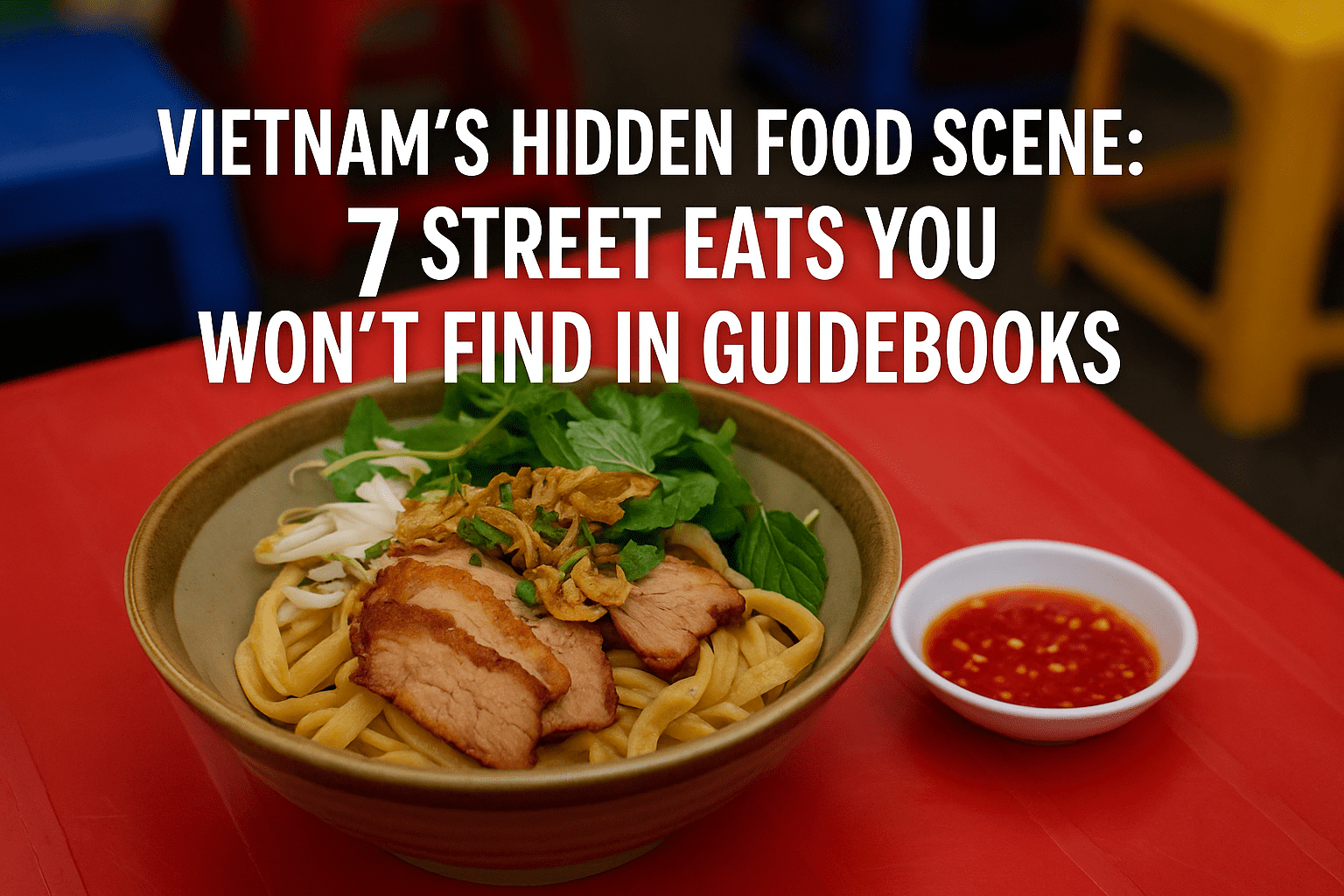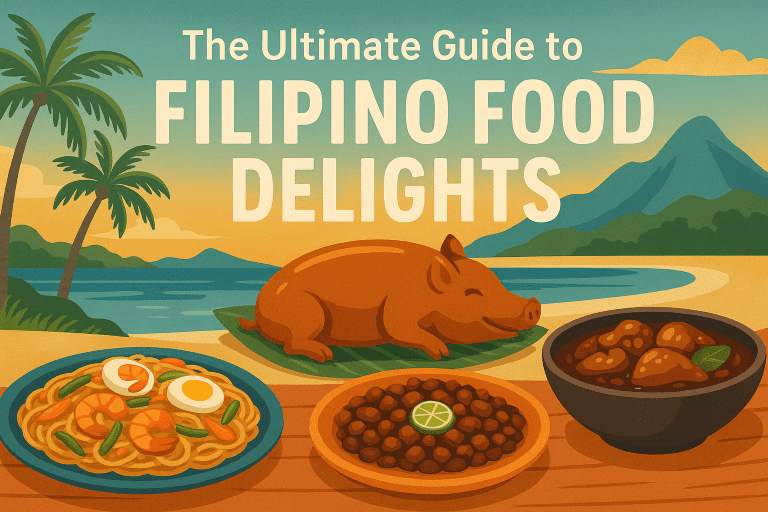
Vietnam’s culinary landscape is legendary, drawing travelers with promises of fragrant broths, crisp baguettes, and vibrant herbs. Yet, for every bowl of pho or bánh mì savored, a vast, bustling world of street food remains tucked away, often beyond the gaze of mainstream guidebooks. This is Vietnam’s hidden street food scene – a realm of hyper-local specialties, generational recipes, and flavors that tell the story of specific regions and communities. We venture beyond the obvious to uncover seven such street eats, offering a glimpse into the lesser-explored corners of Vietnamese gastronomy.

Understanding Vietnamese street food requires embracing spontaneity. It thrives in temporary setups – plastic stools spilling onto sidewalks, charcoal grills smoking on corners, pushcarts ladened with fresh ingredients. It is food deeply intertwined with daily life, prepared with a pace and energy that reflects the rhythm of the streets. These aren’t dishes invented for tourists; they are staples, beloved by locals, often perfected over decades by families.
Let’s delve into this captivating world and discover seven street eats that offer a deeper taste of Vietnam.
1. Cao Lầu (Hội An)
Our journey begins in the ancient town of Hội An, where the air carries the scent of turmeric and old wood. Here, a dish unlike any other noodle soup exists: Cao Lầu. Its most distinctive component is the noodle itself – thick, chewy, and slightly grey, said to be made using water from a specific ancient well in the town and ash from local trees. This combination is believed to give the noodles their unique texture and slight firmness.
A typical bowl of Cao Lầu features these unique noodles topped with slices of slow-roasted pork, mimicking Chinese char siu, though often leaner and less sweet in the Vietnamese rendition. Fresh bean sprouts, crisp lettuce, and a medley of local herbs like mint, cilantro, and Vietnamese basil provide a vibrant, aromatic contrast. Small, crunchy squares of fried pork skin or bánh tráng (rice paper cracker) add a textural crunch. The dish is not a soup in the conventional sense; it’s served with only a small amount of rich, flavorful broth that clings to the noodles rather than submerging them. This minimal liquid allows the distinct textures and flavors of each component to shine. The broth is complex, often containing notes of five-spice, soy sauce, and garlic, deeply savory and concentrated. It’s finished with a spoonful of chili jam or sliced chilies for heat and a squeeze of lime for acidity.
Finding authentic Cao Lầu means looking for small stalls in the market or unassuming eateries tucked away from the main tourist thoroughfares. The preparation often involves simmering the pork for hours and carefully preparing the noodles, a labor of love reflected in the depth of flavor.
2. Mỳ Quảng (Central Vietnam)
Traveling further south along the central coast brings us to Quảng Nam province, the birthplace of Mỳ Quảng. This dish is another noodle revelation, characterized by wide, flat yellow turmeric-infused rice noodles. Unlike the copious broths of many Vietnamese soups, Mỳ Quảng, like Cao Lầu, is served with a relatively small amount of intensely flavored liquid, often described as a broth-sauce hybrid.
The toppings for Mỳ Quảng are incredibly varied, reflecting the ingredient availability and culinary creativity of the region. Common additions include slices of pork belly, shrimp, chicken, or even snakehead fish. A crucial component is the hard-boiled quail egg or chicken egg. Crunchy elements like roasted peanuts and toasted sesame rice crackers (bánh tráng mè) are essential, adding texture and a nutty aroma. Fresh herbs, including cilantro, mint, and knotgrass (rau răm), are added generously, along with crisp lettuce and slivers of banana blossom.
The broth is perhaps the most complex element. It’s typically made from simmering pork and shrimp bones, infused with turmeric, annatto seed for color, fish sauce, and sometimes a touch of peanut oil. The richness comes not just from the broth base but also from the variety of proteins stewed within it, releasing their flavors into the liquid. When served, the noodles and toppings are arranged in the bowl, and the hot broth is spooned over, just enough to moisten everything generously. A spoonful of chili paste adds heat, and a squeeze of lime provides balance. The visual contrast of the yellow noodles against the colorful toppings and deep orange-red broth is striking. The aroma is a complex blend of savory protein, earthy turmeric, and pungent herbs.
Mỳ Quảng is often found at street corners, bustling markets, and simple eateries throughout Quảng Nam and Đà Nẵng. It’s a popular breakfast or lunch dish, substantial yet balanced. The vendors preparing Mỳ Quảng take pride in their specific broth recipes, often a closely guarded family secret, which is why finding your favorite stall is part of the discovery process.
3. Bún Bò Huế (Huế)
Moving to the imperial city of Huế, we encounter Bún Bò Huế, a spicy, savory, and aromatic beef noodle soup that stands distinctly apart from pho. While perhaps more internationally known than some entries on this list, finding an authentic street-side bowl in Huế offers a depth of flavor rarely replicated elsewhere.
The foundation of Bún Bò Huế is a robust broth simmered from beef bones and pork bones, infused with lemongrass, annatto seed for color, and crucially, a generous amount of fermented shrimp paste (mắm ruốc). This fermented paste gives the broth its characteristic pungency and depth, a flavor profile that is intensely savory and complex. The noodles are thick, round rice vermicelli, larger than those typically used in pho.
Toppings include slices of tender beef shank, sometimes beef tendon, and a cube of congealed pig’s blood (huyết) – an ingredient that provides a unique, slightly firm texture and richness. Vietnamese pork sausage (chả lụa) and sometimes pork hocks are also common additions. The dish is served with a vibrant platter of fresh herbs and vegetables, including shredded banana blossom, bean sprouts, mint, basil, perilla leaves, and cilantro. A wedge of lime and a small bowl of chili paste or sliced chilies allow diners to adjust the acidity and heat to their preference.
The aroma of Bún Bò Huế is unmistakable: a powerful blend of lemongrass, spice, and the distinctive scent of shrimp paste. The broth is simultaneously spicy, sour, savory, and slightly sweet, a symphony of bold flavors. The textures range from the tender beef and firm blood cubes to the chewy noodles and crisp, refreshing raw vegetables. Finding authentic Bún Bò Huế often means seeking out stalls that specialize solely in this dish, identifiable by the large simmering pots of broth emitting fragrant steam.
“The beauty of bun bo Hue is in its balance: aromatic, spicy, sour, and savory, but never overwhelmingly so.”
4. Bánh Khọt (Southern Vietnam, particularly Vũng Tàu)
Venturing south, the landscape changes, and so does the food. In coastal areas, particularly around Vũng Tàu, you’ll find Bánh Khọt, delightful mini savory pancakes. These are often overshadowed by their larger cousin, Bánh Xèo, but offer a distinct texture and eating experience.
Bánh Khọt batter is typically made from rice flour, coconut milk, and turmeric powder, which gives them their characteristic yellow hue. They are cooked in special cast-iron molds, similar to those used for Dutch poffertjes or Danish aebleskiver, each indentation creating a small, round pancake with a crispy edge and a soft, slightly chewy interior. Inside each pancake is usually a piece of shrimp or sometimes minced pork, along with a sprinkle of green onion. As they cook, the edges become beautifully golden and crisp while the center remains tender.
The joy of Bánh Khọt lies in how they are eaten. They are served hot off the grill, accompanied by a large platter of fresh greens – lettuce leaves, various herbs like mint, perilla, fish mint, and mustard greens. Diners take a lettuce leaf, place one or two Bánh Khọt inside, add a selection of herbs, roll it up, and dip it into a vibrant dipping sauce (nước chấm). The dipping sauce for Bánh Khọt is typically a sweet and sour fish sauce blend with pickled daikon and carrot (đồ chua), sometimes with added chilies. The crisp exterior of the pancake gives way to the soft interior, contrasted by the crunch of lettuce and the burst of fresh, aromatic herbs, all tied together by the tangy, savory dipping sauce.
These are perfect street snacks, often found at seaside towns or bustling markets in the afternoon and evening. The sound of the batter sizzling in the hot molds and the sight of the vendor flipping the golden discs are part of the experience.
5. Bún Đậu Mắm Tôm (Hanoi & Northern Vietnam)
Returning north to the capital, Hanoi, we encounter a dish that challenges many palates due to its pungent centerpiece: Bún Đậu Mắm Tôm. This is less of a single dish and more of an assembly, a platter featuring various components meant to be combined and dipped into a potent fermented shrimp paste sauce (mắm tôm).
The core components are bún (rice vermicelli noodles), often pressed into small, compact blocks, and đậu (fried tofu), typically crispy golden squares with a soft interior. Alongside these, the platter includes various accompaniments: chả cốm (Hanoi’s green sticky rice pork patties), nem rán (fried spring rolls), boiled pig’s organs like intestine (dồi trường), and fresh herbs like perilla, mint, and cilantro. The star, or perhaps the most infamous element, is the mắm tôm. This thick, purple-pink sauce is made from fermented shrimp and possesses a powerful, savory, and intensely umami aroma and flavor. It is traditionally mixed with a squeeze of kumquat or lime juice, a spoonful of sugar, and sliced chilies to balance its richness and intensity, creating a frothy mixture that is both polarizing and addictive to those who appreciate its depth.
Eating Bún Đậu Mắm Tôm is a communal experience, with the platter placed in the center. Diners pick and choose components, dipping them generously into the customized mắm tôm. The textures are diverse: soft noodles, crispy tofu, chewy pork patties, tender organs, and fresh, aromatic herbs. The flavor is dominated by the intense mắm tôm, which requires an adventurous spirit, but when balanced with acidity and sweetness, it provides a uniquely Northern Vietnamese taste. You might see locals expertly mixing their mắm tôm at a small street-side table, adjusting the balance precisely to their liking.
This dish is a Hanoi staple, found in small alleys and unassuming eateries rather than main boulevards. It’s a favorite lunch item, often enjoyed in the shade of trees or under temporary awnings.
6. Nem Lụi (Central Vietnam)
Nem Lụi refers to grilled pork skewers wrapped around stalks of lemongrass. While found in various forms across Vietnam, the most famous style originates from Huế and Central Vietnam. It’s a dish where the preparation, presentation, and the act of eating are as important as the flavor itself.
The pork mixture is typically minced pork combined with pork fat, seasoned with ingredients like garlic, shallots, sugar, fish sauce, and black pepper. Sometimes, a binder like tapioca starch or cornstarch is used. This seasoned mixture is then molded around lemongrass stalks, which impart a subtle citrusy aroma as they grill. The skewers are then grilled over charcoal, giving the pork a smoky char on the outside while keeping it juicy within. The aroma released during grilling is incredibly enticing – sweet, savory pork mingling with fragrant lemongrass.
Nem Lụi is served with a variety of accompaniments: fresh herbs (mint, basil, perilla, starfruit, green banana slices), rice vermicelli noodles, crispy fried wrappers, and rice paper wrappers (bánh tráng) that have been slightly moistened. The dipping sauce is unique – a rich, slightly thick sauce made from ground peanuts, liver, and fermented bean paste (tương). It’s savory, nutty, and slightly sweet, a perfect counterpoint to the grilled pork and fresh elements.
Eating Nem Lụi is interactive. You take a moistened rice paper wrapper, add some vermicelli, herbs, a piece of the crispy wrapper, and then slide the grilled pork off the lemongrass stalk onto your wrapper. You roll it up tightly like a spring roll and dip it generously into the peanut-bean sauce. The textures are a delightful mix: the slightly chewy wrapper, the soft noodles, the crispy crunch, the fresh herbs, and the juicy, smoky pork. The flavor profile is a complex balance of savory, sweet, nutty, and aromatic from the lemongrass.
You’ll find Nem Lụi sizzling on grills at street stalls, especially in Huế and Đà Nẵng, often enjoyed in the evening. It’s a popular communal dish, perfect for sharing with friends over conversation. The art of wrapping and dipping adds to the enjoyment, making it a memorable culinary experience.
7. Ốc (Snails & Seafood) (Southern Vietnam)
Finally, we head to Southern Vietnam, particularly cities like Saigon, where the street food scene explodes with options after dark. Among the most popular are stalls specializing in Ốc – a broad category encompassing various types of snails and small seafood dishes, cooked in myriad ways.
This isn’t just one dish but a whole culinary subculture centered around mollusks and shellfish. Common types of snails include ốc hương (sweet snails), ốc mỡ (fat snails), ốc len (mangrove snails), and many others, each with a distinct texture and flavor. They are prepared using a variety of techniques: stir-fried with garlic and butter (ốc mỡ xào tỏi), steamed with lemongrass and chili (ốc hương hấp sả), stir-fried with coconut milk (ốc len xào dừa), or grilled with green onion oil and peanuts (sò điệp nướng mỡ hành – grilled scallops, often found at ốc stalls). The cooking methods are designed to highlight the natural sweetness and texture of the seafood while infusing them with powerful aromatics.
The sauces are crucial. Garlic, chili, lemongrass, ginger, fish sauce, butter, and coconut milk are common ingredients. Dipping sauces are also essential, often a simple salt, pepper, and lime mix (muối tiêu chanh) or a more complex chili and ginger fish sauce. The preparation sounds are part of the experience – the clinking of shells, the sizzling of garlic in hot oil, the rhythmic chopping of lemongrass.
Eating Ốc is an inherently social activity, typically enjoyed in the evening at bustling street-side restaurants with low tables and plastic chairs. Diners order several plates of different types of snails and seafood, sharing them communally. The act of extracting the snail meat from its shell using a toothpick or pin is part of the ritual. The flavors are often intense: rich, savory, spicy, and aromatic, contrasted by the chewy or tender textures of the shellfish. The aroma of sizzling garlic and seafood fills the air around these stalls.
Ốc stalls are ubiquitous in Saigon and other southern cities once the sun sets. They are lively, sometimes chaotic environments, offering a true immersion into local nightlife and culinary habits. It’s a side of Vietnamese dining that is dynamic, flavorful, and deeply ingrained in the social fabric.

Conclusion
Exploring Vietnam’s culinary landscape beyond the well-trodden path offers profound rewards. These seven dishes represent just a fraction of the incredible Vietnamese street eats waiting to be discovered. They are more than just food; they are windows into the soul of regions, the ingenuity of cooks, and the daily life of communities.
Each dish tells a story through its ingredients, preparation, and the way it is consumed. They embody the Vietnamese philosophy of balancing flavors and textures – the interplay of savory, sweet, sour, spicy, and bitter, combined with elements that are soft, chewy, crispy, and fresh. To seek out these lesser-known street foods requires a willingness to step off the main road, venture into local markets and small alleys, and trust the recommendations of residents. It’s in these unassuming places that you’ll find the most authentic and compelling flavors.
These dishes offer a richer, more nuanced understanding of Vietnam through its vibrant and complex culinary heritage. They remind us that the most unforgettable food experiences often lie just beyond the obvious, waiting to be unearthed by the adventurous eater. So, next time you find yourself in Vietnam, look past the usual suspects and dive into the heart of the street food scene – you won’t be disappointed.







